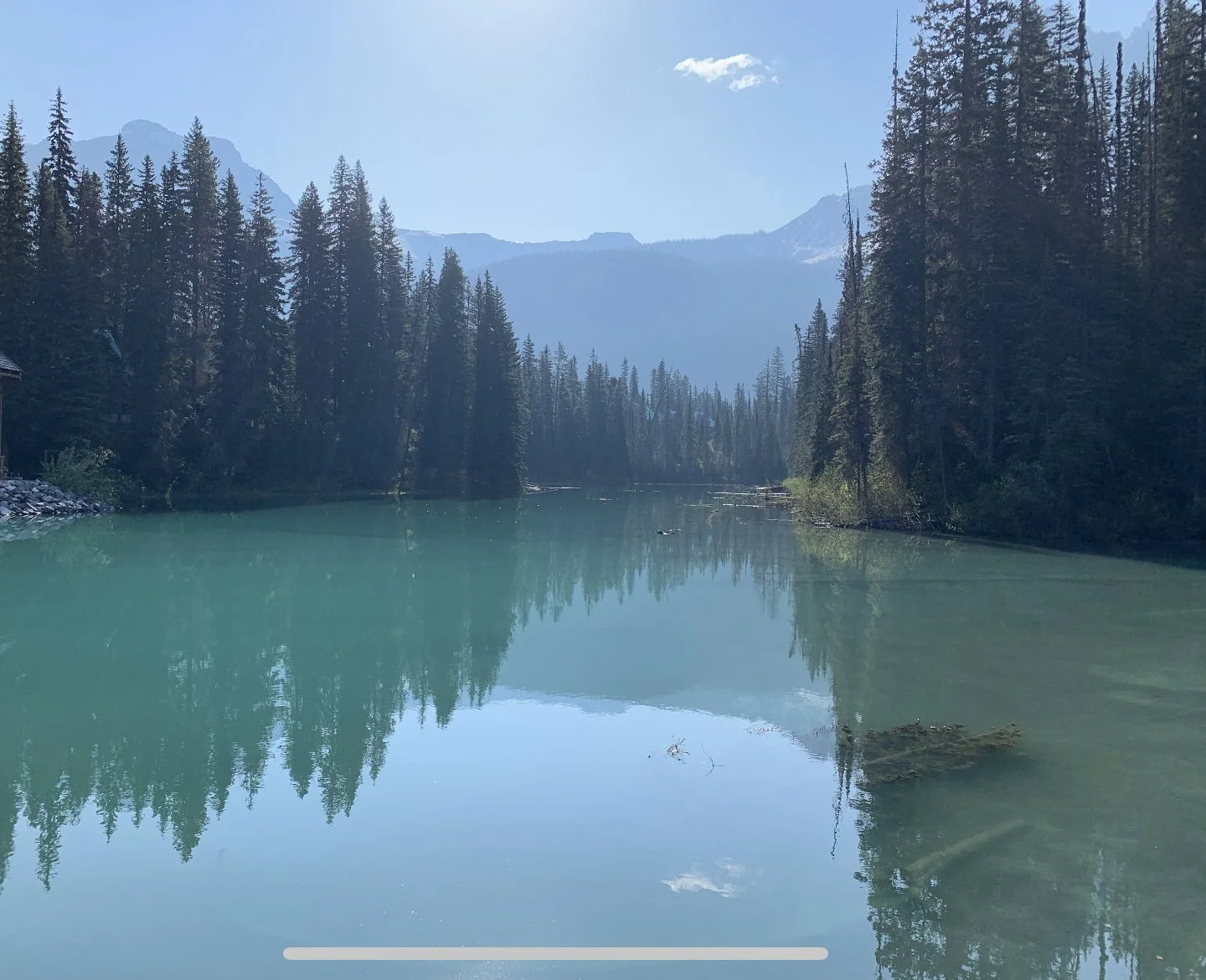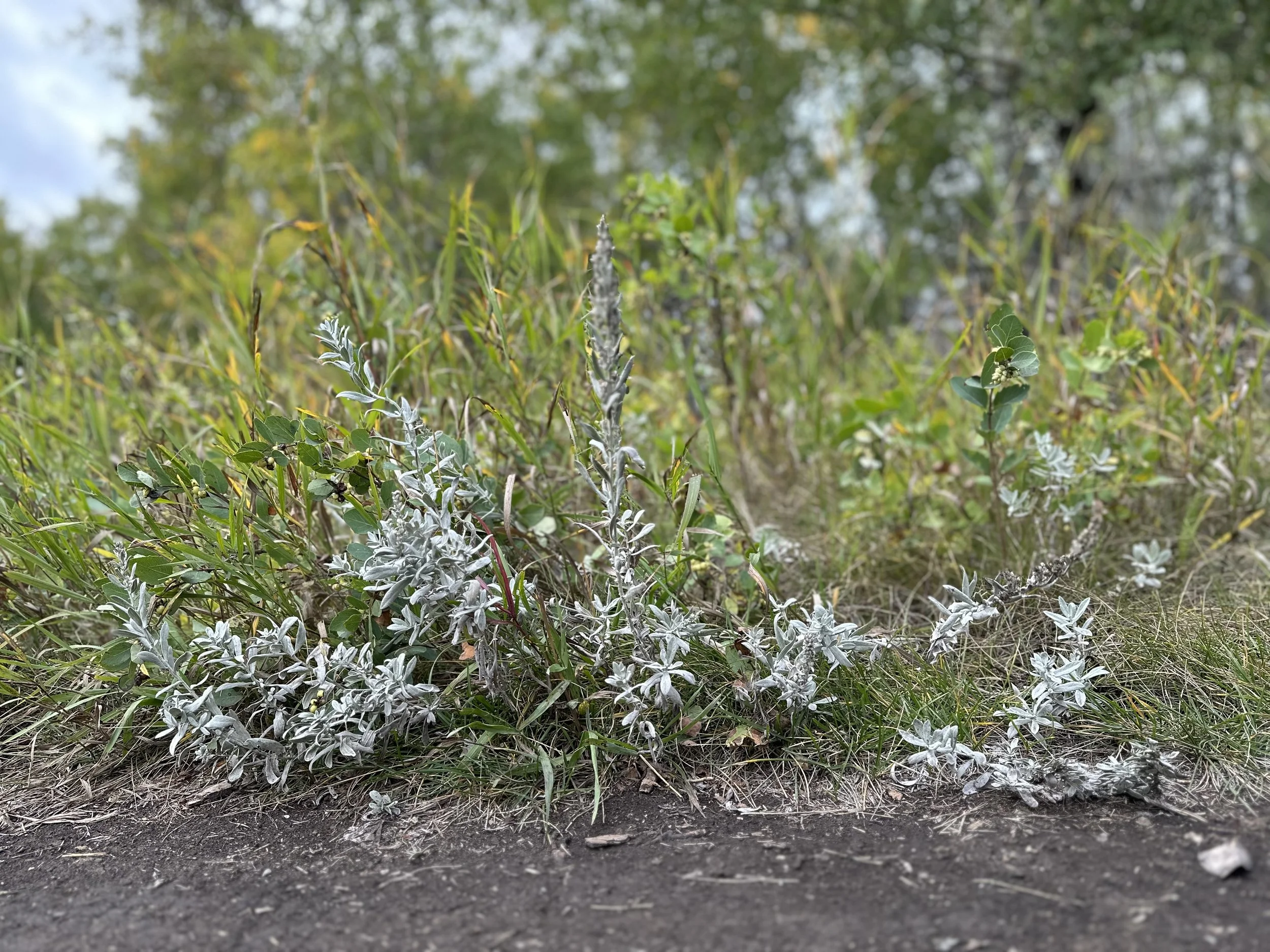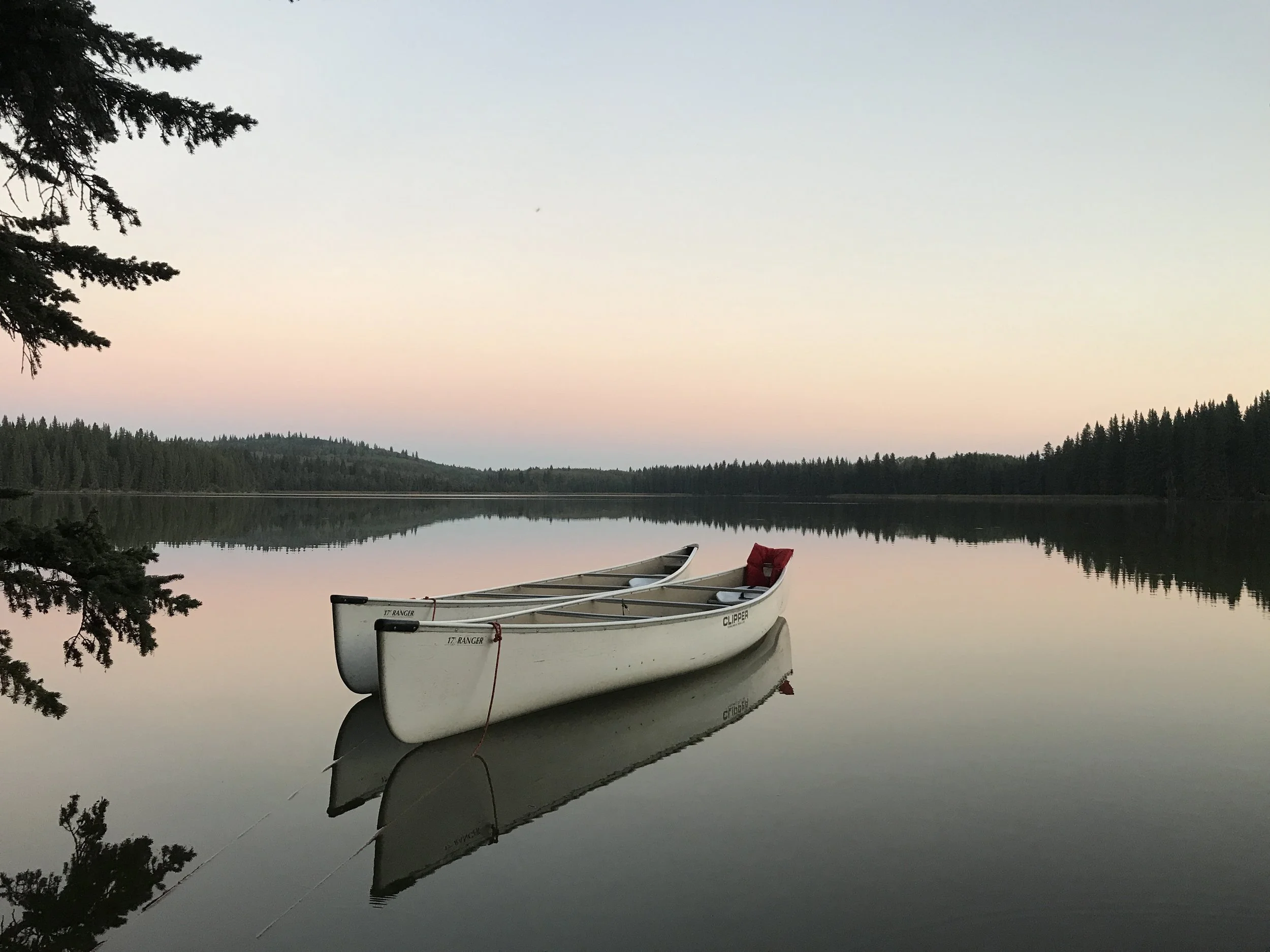
Non-Indigenous Teachers’ Stories of Journeying, Learning, Unlearning, and Negotiating Discomfort and Possibility
Welcome Dear Reader
My thoughts come like water. Sometimes they flow rapidly, they rush and crash, leaving waves of ideas in their wake. Sometimes they trickle between my fingers as I grasp in vain. They swirl and circle, rippling outwards with the introduction of a new idea. At the confluence where the quick and restless meets a steady flow, my brain creates beauty and stories in the churning.
Many thoughts work on me like stories that beg to be told. I sit with them, and they tell me more. Some make it to the page and others may be lost in my mind for some time to come. Some are only ever told aloud. Nevertheless, the movement and pathways of each thought and story changes the ways I come to the page, the ways I come to my journey of learning and unlearning. This process of creating stories out of thoughts occurs as I travel from head to heart. It is through this travelling journey that I come to great gratitude for the opportunities to know and see in different ways. Becoming, perhaps never arriving…
I have come to the place where my intuition tells me I am welcome. I introduce myself to the Land by sounding my voice and I settle in to sit on the bank of the stream. I always find myself back by the water. I sing the Water Song the way Auntie Sharla has taught me to and I offer tobacco at the water’s edge.
I expect the tobacco to be taken down stream. Perhaps I have romanticized this picture in my head – tobacco finding its way downstream, over the Grandfather Rocks and around the bend. But what is expected is not what happens. Instead, I watch the tobacco swirl and circle between the rocks. Unpredictable, but perhaps not without intention.
I share this experience when gathered with dear mentors and I am met with beautiful wisdoms and wonders that wash over my research experience like a sincere invitation to continue showing up wholeheartedly, authentically, vulnerably me.
I am paddling through this head to heart journey, I say, yet I feel like the tobacco, swirling in one place. How will I know when I have arrived?
You know, Darcy… maybe we never arrive… Auntie Janice offers.
Perhaps instead, Auntie Trudy adds, we’re allowed to swirl and to speak from a place of swirling and twirling…
The teachings are everywhere, Ojibway writer Richard Wagamese says, you just have to open yourself up to them. I acknowledge that on this journey I risk projecting my own interpretations of the teachings as they come. This research is limited by my own whiteness and in order to ensure I walk in good ways as a non-Indigenous teacher and researcher, I rely heavily on the teachings and guidance of Indigenous mentors who I walk alongside in the spirit of relationship, reciprocity, respect, and protocol. I have been taught to trust my intuition, ground myself often, to smudge for clarity, and to continuously go to the Land. My research reflects the ways I experience the world and are my storied versions of what I have learned along my own ongoing journey from head to heart.
I am grateful for the stories, the teachings, and the ways of being and knowing that have contributed to the ways I show up in this world. This doctoral research is an embodiment of my own journey of learning and unlearning alongside Indigenous folks and knowledge systems. What I have learned, I hold as truth. My teachings come from Indigenous folks across Turtle Island (known colonially as Canada/North America). I use the term Indigenous, not to paint a picture of a pan experience, but rather to acknowledge the rich, embodied, steadfast diversity of People, knowledge, and ways of knowing and being that come from the Lands and ancestry of Turtle Island. Engaging in writing around reconciliation and Indigenous ways of knowing and being calls me as an author to engage relationally not only with my reader, but with the ideas I am citing. It is important for me to highlight and centre the Indigenous voices that have informed my thinking. You will notice I approach this relationally by calling folks by name and identifying their ancestry as they have introduced themselves. I have been asked by Siksika Elder, Hayden Melting Tallow, to remember, as I write for a larger audience than myself, the Indigenous Peoples of Turtle Island carry distinct, diverse ancestral, linguistic, and Land teachings from time immemorial. These teachings have been shared through stories, through the living of life alongside one another, and through embracing that we are spiritual beings in a spiritual world.
My journey is not linear. I embrace the spiral and swirl of my learning, my thinking, and try to reflect that in my writing. I aim to write in ways that offer you, my dear reader, many doors to walk through, look around, and hold onto what resonates with you. These pages are filled with profound teachings and learnings from my experience, as I have come to know them. In the moments and overtime. Some of my realizations may shift and change, even before my final draft is created. I know a future me will see things differently and I embrace the organic beauty that holds each fragment as cherished and true to my understanding at that point, at that time, mid-swirl.
I come to my research with genuine questions, wonders, tensions, and a deep sense of personal responsibility to be on my own journey. I believe in this work and the importance of inviting in the self-work, the learning of hard truths, the humility, and the centreing of Indigenous voices, ways of being, and truths. I never set out, nor claim to be a voice of authority in this space. My writing and my research are upheld by ethics of respect, responsibility, reciprocity, and love. They are voiced by my own sense of wonder and coming to know. I am guided by intuition and invite you on a journey of lived experience alongside myself and two non-Indigenous teachers/co-researchers.
I imagine you, dear reader, reading this by the fire, or on the Land, somewhere where you too find beauty in the teachings as they come and allow them to continue to work on you. You will perhaps find some familiarity in the layout of my dissertation, though it is hard to tell non-linear stories in linear ways. I invite you to look for the ways my stories circle past each other, throughout and across timelines. What you find is yours to cherish or dismiss. I only ask that you carry my stories with grace as I offer them. Beautifully overwhelmed and comfortably sitting alongside discomfort. Perfectly imperfect, not yet arrived, admittedly swirling amongst the rocks.
Research at a Glance
The Final Report of the Truth and Reconciliation Commission of Canada (Truth and Reconciliation Commission of Canada [TRC], 2015) attributes generational miseducation for the “troubled relations” between Indigenous and non-Indigenous peoples. It states, “education must remedy the gaps in historical knowledge that perpetuate ignorance and racism” (p. 117) and “transform Canadian society so that our children and grandchildren can live together in dignity, peace, and prosperity on these lands we now share” (p. 4). In response to the Calls to Action of the TRC (2015), Alberta Education announced updated Teacher Quality Standards (TQS) intended to further the application of First Nations, Métis, and Inuit peoples’ foundational knowledges, “enrich[ing] the learning experience of all students” (Alberta Education, 2018). Teachers are to weave Indigenous voices and perspectives throughout all areas of curriculum and demonstrate a personal understanding furthering the development of knowledge, understanding, and respect for Indigenous peoples within Alberta’s classrooms. My doctoral study addressed this by inviting non-Indigenous teachers to unpack their understandings of reconciliation within and beyond the classroom. These journeys are complex and dynamic and require both personal and professional commitments. In the midst of this endeavour have been my own explorations and experiences of coming to understand my responsibilities as a non-Indigenous Treaty person, educator [3], and mother while on this Land I call home.
Drawing on narrative inquiry as “a way of understanding experiences” (Clandinin & Connelly, 2000, p. 20), and influenced by Indigenous scholarship and storywork as a way of “seeking meaning in community” (Archibald et al., 2019, p. 11), I inquired into the lived experiences of two non-Indigenous elementary teachers as they explored their journeys of learning and unlearning in response to their own commitments to reconciliation, the Calls to Action of the TRC, and the TQS. Our research gatherings addressed personal, social, historical, cultural, and institutional narratives that have shaped the lives of these two teachers within Alberta’s public school systems. We also unpacked the tensions and supports experienced by the teachers.
My co-researcher participants and I gathered all together monthly over the span of nine months. The participants were invited to reflect upon their own relational learning journeys shaped by their context and be awake to their own learning experiences. Further, the participants came together for two circle gatherings alongside Indigenous Elders and Knowledge Keepers. The Elders helped us think about ways small, intentional shifts have great impacts. Our final gathering took place 18 months from the first and offered creative space to reflect upon the stories shared and the teachings we will carry forward. The design of intentionally slowing down and gathering in circle honours the ways stories continue to work on us as co-researchers while revering lived and storied experiences as intimate, relational, interconnected, ethical, and educational (Ermine, 2000; Martin, 2003; Weber-Pillwax, 2004).
This research is grounded in a journeying framework. Journeying, as described by Zinga et al. (2009):
symbolizes the passage from one place to another; is initiated by questioning, meanings, interpretations, and identity; is begun by making a conscious decision to move into unfamiliar territory while maintaining an observing and reflective frame of mind ... Journeying is a place where spirituality is infused into the mind, body, and emotional states of our being. (p. 25)
As I began my research, I imagined the ways I might embody this definition of journeying. Where myself, alongside fellow non-Indigenous teachers might begin to initiate a process of puzzling, imagining, unpacking, and looking inward. I wondered deeply about the journeys of learning and unlearning in response to personal and professional commitments to reconciliation. I questioned how non-Indigenous teachers like myself might be navigating this meaningfully; beyond checking boxes of professional obligation.
The next part of this same quote, “journeying without intent is nothing more than aimless wandering” (p. 25), always sat uneasily with me as I am a wanderer. My mind wanders, my stories wander, my feet lead me down paths towards locations unknown and I yet always learn. I admit that there were many times this research journey where I wandered and had to come back to my intent, my heart, my whys and hows. It took me nearly the duration of the research and dissertation creation journey to understand the message deeper. Without intent, I am aimless.
Through personal visits with Elder Hayden Melting Tallow of the Siksika Nation, I have come to envision that this journey leads us each down our own pathway until we find a place to ground ourselves. Along each pathway we learn as we prepare ourselves for what we may encounter, as we observe what is around us, as we persevere through obstacles and discomforts, as walk alongside others, and as we humble ourselves. Sometimes, like the swirling of the tobacco, the pathway is not what we anticipated. This reminds me that it is imperative to acknowledge that we don’t know what we do not know. I must always be aware of the ways I walk (or swim, or crawl, or paddle…) on these paths, the privilege I hold, and the responsibility I have to travel in good ways.
Throughout this research journey, I came to make sense of my research gatherings and personal experiences by doing what I called “wandering, then coming back”. It invited me to wander mind, body, spirit, and emotion, and then connect back to teachings, readings, and experiences that grounded me in why it was important to this research. I attended intently to the stories of my co-researcher participants and myself that were rooted in the lived experience of “purposeful journeying [that] leads us to shift and transform the landscape of our previously held assumptions and paradigms” (p. 25). It is these stories that I wish to share for consideration.
Throughout this dissertation website there are threads of a typical five chapter dissertation, though many liberties have been taken to honour a more (w)holistic interpretation of my own journey of learning and unlearning. I wish to share a glimpse into each section, though I invite you to consider this website as an immersive experience where stories and teachings are layered and circular rather than merely linear. I have chosen a format that privileges literacy as life lived (Courtland, 2020) through oral storying, visuals, imagery, poetry, and more. The section entitled “Embarking on the Journey” calls forward many of my early stories that brought me to this research topic. I ground myself in the philosophical and theoretical ways of knowing, being, and conceptualizing and living out this research in “Honouring Wisdoms”. “Conversations with the Literature” is my literature review that considers what I have called “situations of non-Indigenous teachers” throughout existing research. Further, as I grappled with how I might encompass the experience of storying my research, I composed the section I called “Sitting with Research Stories & Stories of Research”. This section first invites you to sit alongside a circle of my own oral stories of lived experience that continued to inform me throughout my research journey, before delving into the spirit of the research gatherings and the expression my gratitude to my co-researcher participants for the ways their stories of experience are woven into my journey. “(Re)Searching, (Re)Visiting, (Re)Storying” revisits the conception of “situations of non-Indigenous teachers” and shares the way I reconsidered and re-conceptualized the wording to reflect the non-Indigenous teacher’s stories I heard echoed throughout our gatherings. These were stories of tension, of humility and vulnerability, of curiosity, of listening, and of leaning in wholeheartedly. Lastly (or perhaps additionally, as I hope to push the boundaries and reimagine a linear structure), the page entitled “Linger”, offers the ways I consider the stories and journeys shared through the lens of grounding oneself, not at the end of ones journey, but rather at the place “where our stories intersect and become interconnected with other stories” (Zinga et al., 2009, p. 25).
Both vital and timely, this study aims to advance teachers’ ability to acknowledge their positionality, engage in head to heart journeys, and bring forward the stories, voices, and truths of Indigenous peoples, thus interrupting a one-sided, Eurocentric way of knowing and contributing to enhanced learning experiences for all youth.
Journeying through Reconciliation
People live stories, and in telling of these stories, reaffirm them, modify them, and create new ones.
Clandinin & Connelly, 2000, p. 26
While on this doctoral journey, I have played with metaphors to help me make sense of the idea of journeying. The first of which was this canoeing metaphor. Click the link below to listen.

“Journeying symbolizes the passage from one place to another; is initiated by questioning, meanings, interpretations, and identity; is begun by making a conscious decision to move into unfamiliar territory while maintaining an observing and reflective frame of mind”
(Zinga et al., 2009, p. 25)
Add all the language - learning, unlearning, journeying, decolonization, reimagining
“Reconciliation”
The Truth and Reconciliation Commission of Canada (2015a) defines reconciliation as “an ongoing process of establishing and maintaining respectful relationships. A critical part of this process involves repairing damaged trust by making apologies, providing individual and collective reparations, and following through with concrete actions that demonstrate real societal change” (p. 16). Through this process I have often felt tension with the word “reconciliation” and have wondered if another term might be better suited. Click the picture above to access a video via Youtube where I share more around this tension and why I have chosen to use the word throughout this research. You will also be able to read the close captions, see the generated transcript, or increase/decrease the listening speed as desired.



